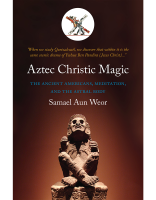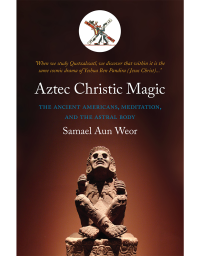In the mid-1970’s, Samael Aun Weor wrote several books about the spiritual knowledge of the ancient Americans: Aztec Christic Magic (1973), The Secret Doctrine of Anahuac (1974) and The Kabbalah in the Mayan Mysteries (1977). Written in Spanish for the general population of Latin America, his readers already had basic knowledge of the civilizations that flourished in the Americas before the Europeans arrived in their lands. Thus, he did not spend time introducing terms that for them are very obvious, like Nahuatl, Quetzalcoatl, Coatlicue, etc. In order to help readers from other cultures who lack familiarity with those words, we have provided footnotes and a glossary at the end of the book, as well as a comprehensive glossary at glorian.org.
These three books complement each other very deeply, thus it is wise to study all three. Furthermore, to fully grasp what they are communicating, you should also study Tarot and Kabbalah (1978), which describes the essential structure of all religions.
Mantra Pronunciation
Chanting or repetition of sacred sounds is universal in all religions. In Sanskrit, these sounds are called mantras, and their repetition is called japa.
Generally speaking, the sounds in mantras are pronounced using the ancient roots (Latin, Sanskrit, etc):
- I: as the ee in “tree”
- E: as the eh in “they”
- O: as the oh in “holy”
- U: as the u in “true”
- A: as the ah in “father”
- M: extended as if humming, “mmmmm”
- S: extended like a hiss, “sssss”
- CH: if the word is Latin, pronounced as k. If the word is Hebrew, pronounced as a scrape in the back of the throat, as in “Bach”
- G: in most mantras, G is pronounced as in “give”
Should Mantras be Spoken Aloud or Silent?
“...the verb is of triple pronunciation and that it endows three norms: verbal, mental, and conscious. One can articulate with the creative larynx, one can vocalize with his thought, and one can vocalize with the superlative consciousness of the Being.” –Samael Aun Weor, Esoteric Medicine and Practical Magic
“There are three ways that one learns to use a mantra, to repeat prayers or sounds. They are quite simple: aloud, quietly, or silently.
Vaikhari Japa: verbal, loud
Upamshu Japa: whispered or hummed
Manasika Japa: mental, silent, without moving.” –the lecture Yoga of Devotion
“The fruits of whispered japa are a thousand times more powerful than the verbal japa, and the fruits of the silent, mental japa are hundreds of thousands of times more powerful than the verbal japa. Mental japa can even be kept up while at work.” –Swami Sivananda







